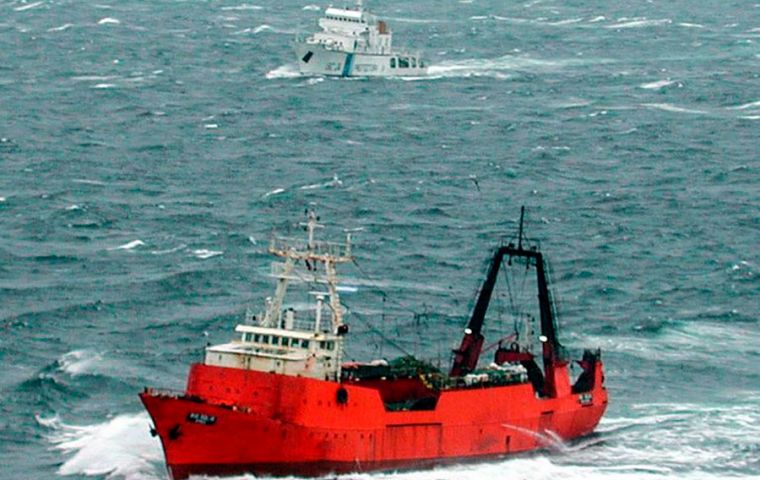MercoPress. South Atlantic News Agency
Hake fishing halted for conservation purposes
 Experts found it necessary to protect a concentration of juvenile specimens
Experts found it necessary to protect a concentration of juvenile specimens Authorities from Uruguay and Argentina have agreed to halt hake capture effective Oct. 1 on a temporary basis to preserve the species, it was announced.
The Joint Technical Committee of the Maritime Front ordered on Monday the prohibition of hake fishing in the Common Fishing Zone shared by Argentina and Uruguay through Dec. 31, 2022, within the following geographical points: a) 35°38'S - 53°20'W; b) 35°46'S - 52°51'W and c) 37°19s - 55°23'W.
The experts found it “necessary to protect” a concentration of juvenile specimens of hake (Merluccius hubbsi) found in the area “in order to contribute to the proper conservation, rational exploitation and recovery of the resource.”
The regulation allows “the fishing of pelagic species using only mid-water nets and during daylight hours.”
In this scenario and with the national shrimp season having ended, fishing in Argentina is now focused on the export of the product while the provinces prepare for regional year-ending seasons.
According to the National Institute of Statistics and Census (Indec), fishing exports in the first semester of 2022 amounted to US$ 835 million, or 1.9% of the country's total exports. Despite a 3.4% decrease from last year, fishing is among the economic activities having returned to pre-pandemic levels.
In Argentina's Patagonia, fishing has a place among other industries such as hydrocarbon exploitation, mining, and tourism.
In Chubut, one-third of foreign trade is fishing (US$ 2,914 million, against US$ 2,030 million in 2020). In Santa Cruz, fishing reached exports for US$ 2.316 million, still below the US$ 2.459 million from 2019.
According to the Patagonia Tercer Milenio Foundation, in Chubut, there are serious problems regarding regulation since “this is due to the absence of selectivity devices and equipment; gross failures in control and inspection; an integral modality of violations, abuses, non-compliance and 'ignorance' of the rules and laws in force; absence of an integral organization of the regulatory framework; a scarce presence of inspectors, and absence of management plans in the conceptual framework of Sustainable Development.”
Provincial bill 072/22 authored by Deputy Carlos Eliceche seeks to address these shortcomings while recognizing the existence of the Interjurisdictional Area of Restricted Fishing Effort (AIER), created by the Nation and the Province, as an exclusive place for vessels of 21 meters in length -the historical Yellow Fleet-, to carry out their activity. The new rule would allow Yellow Fleet vessels to increase their catch limit to 1,900 boxes equivalent to 34.5 tons of shrimp, while the artisanal fleet may increase its size up to 10.5 meters and increase the catch limit to 550 boxes of shrimp.
Rio Negro lawmakers are also taking steps toward updating the 1985 Fishing Law, while in Santa Cruz, there is currently a bill that seeks to stop the “overexploitation” of the resource pending an Integral Hydrological Planning.




Top Comments
Disclaimer & comment rulesCommenting for this story is now closed.
If you have a Facebook account, become a fan and comment on our Facebook Page!